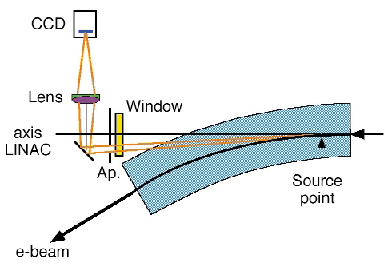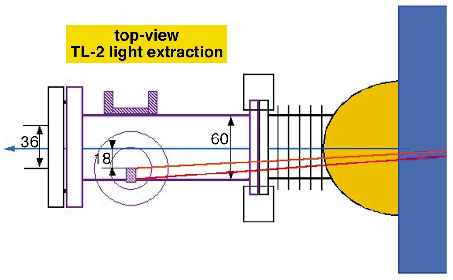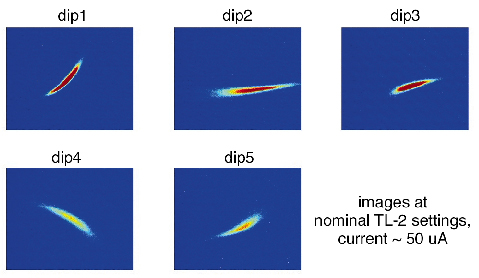- Home
- Users & Science
- Scientific Documentation
- ESRF Highlights
- ESRF Highlights 2004
- The X-ray Source
- Dipole Light Monitors in TL-1 and TL-2
Dipole Light Monitors in TL-1 and TL-2
The visible part of the synchrotron radiation produced in each of the bending magnets of the linac-to-booster (TL-1) and linac-to-storage ring (TL-2) transfer lines is now extracted to obtain images of the electron beam profile in the corresponding bending magnet. In contrast to the fluorescent screen monitors in use since 1991, this provides a non-destructive, high resolution and high sensitivity beam monitoring during the booster and storage ring injections. The light collection and imaging system are shown in Figure 162 and Figure 163 for the TL-1 and TL-2 bending magnets.
 |
|
Fig. 162: Top-view of the light collection and imaging system for the TL-1 dipoles. |
 |
|
Fig. 163: Top-view of the light collection and imaging system for the TL-2 dipoles. |
The bending magnets of TL-1 (180MeV, 0.387T) produce sufficient visible light to obtain a low-noise image for a circulating electron current as low as 200 µA. For the bending magnets of TL-2 (6GeV, 0.9T), the current limit drops to 50 µA. Compared to the screen monitors in use since 1992, the imaging is not only more sensitive to low current but it is non destructive and provides a much improved spatial resolution. Images obtained on each 5 bending magnets of TL-2 are shown in Figure 164.
 |
|
Fig. 164: Images of the electron beam recorded in each 5 bending magnets of the TL-2 transfer line during injection into the storage ring. |



